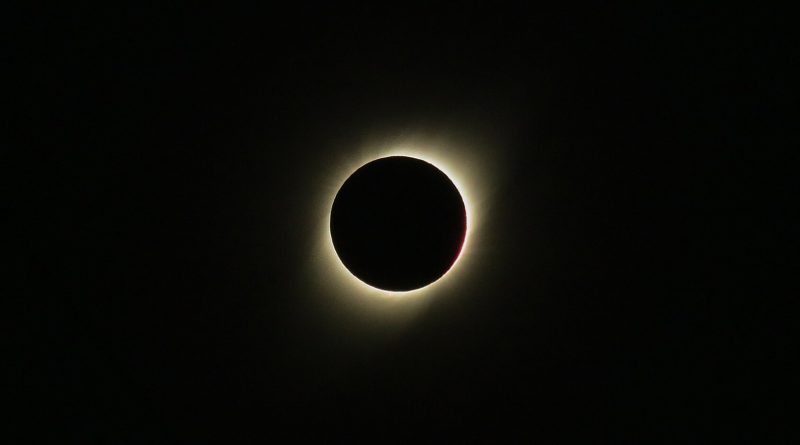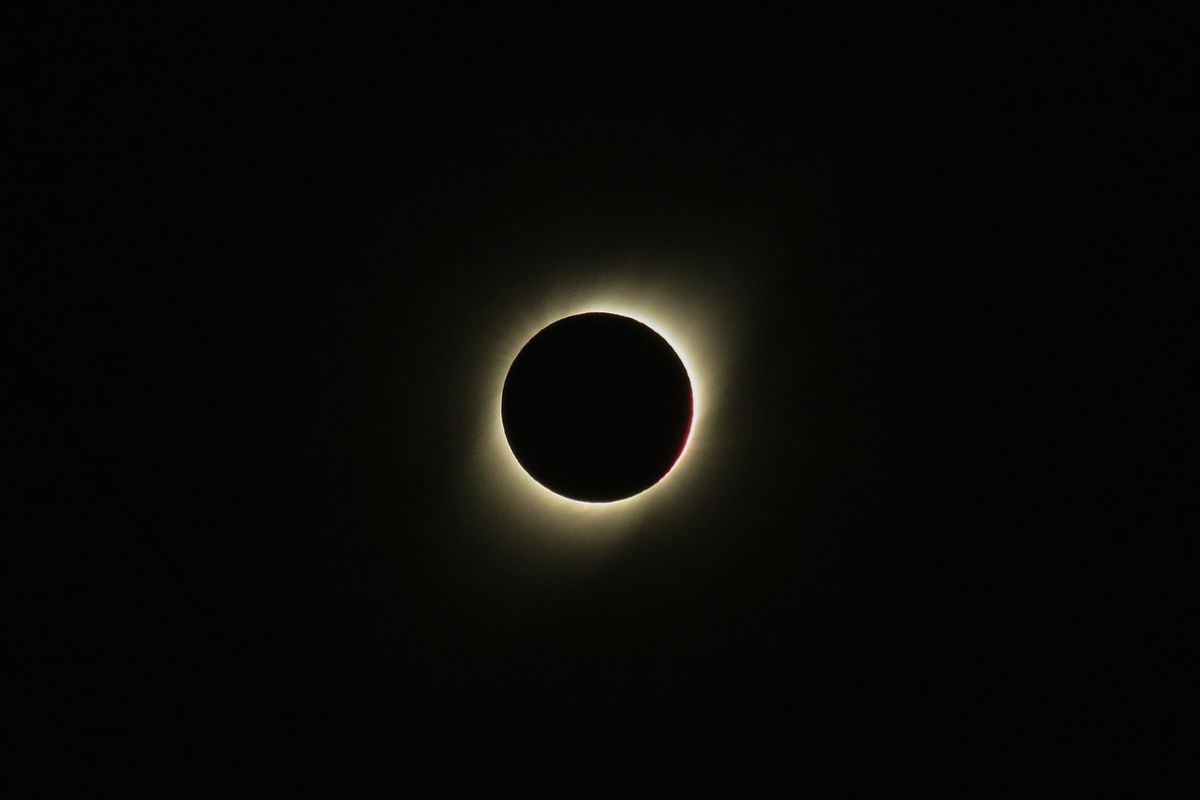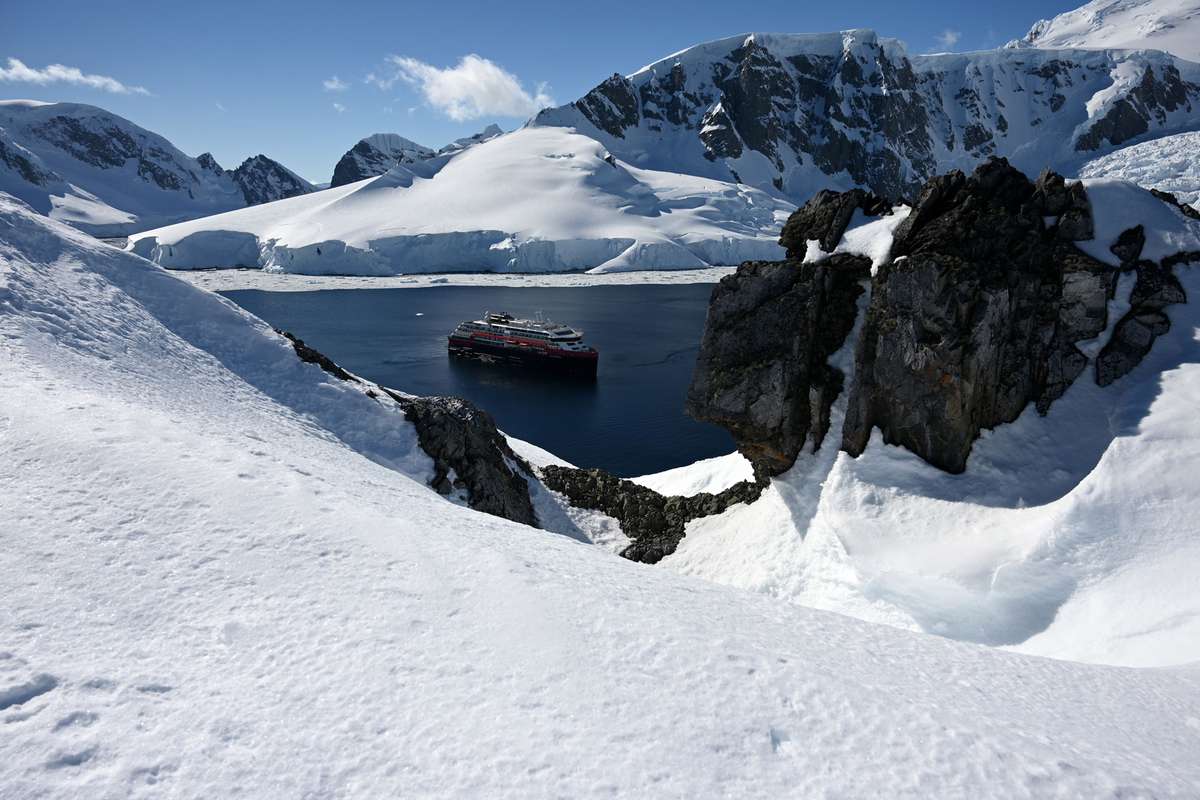How to See the 2021 Total Solar Eclipse in Antarctica
Editor's Note: Those who choose to travel are strongly encouraged to check local government restrictions, rules, and safety measures related to COVID-19 and take personal comfort levels and health conditions into consideration before departure.
Otherworldly Antarctica will become even more captivating on Dec. 4, 2021, when the year's only total solar eclipse darkens the skies above Earth's ice-laden seventh continent. After December 2021, Earth won't experience another total solar eclipse until 2023 — and Antarctica won't see one again until 2039.
A total solar eclipse, the rare and fleeting moment when the moon covers the full face of the sun, allures millions of tourists with its awe and splendor. "The sky is mostly dark overhead, like on a night with moonlight, but the warm tones of sunset are visible in a ring extending 360 degrees around the horizon," says John Barentine, director of public policy for the International Dark-Sky Association. "The air temperature noticeably cools. Birds go into trees to roost and get quiet. Bright stars and planets are visible in the sky overhead. This is why people will spend thousands of dollars and travel thousands of miles to witness something that only lasts for a few minutes."
The Total Solar Eclipse Experience
Travel is often required to see a total solar eclipse; the full effect is only enjoyed along the path of totality, a narrow ribbon on Earth's surface where the moon and sun line up perfectly. On Dec. 4, 2021, eclipse totality stretches along one of the most popular and accessible Antarctica tourist tracks: just north of the South Orkney Islands, down along the Weddell Sea, across the Antarctic Peninsula, and over Union Glacier. The low-hanging eclipse location, just eight degrees above the southeast horizon, promises stunning scenery, with icebergs in the foreground and a mesmerizing total solar eclipse behind.
Eclipse enthusiasts along the path's fringes, in the southernmost stretches of Africa — near Cape Town, South Africa, and Swakopmund in Namibia (five hours south of the popular Skeleton Coast) — can see a partial eclipse the morning of Dec. 4, 2021, as well.
But Barentine says nothing competes with a total eclipse of the sun — especially the continent's only total solar eclipse for nearly 20 years and the last one to travel this beloved Antarctic tourist track for nearly 400 years. That's why, pending pandemic regulations, expedition companies are ready to go all out.
An Eclipse-view Cruise to Antarctica
A total solar eclipse cruise pairs mind-blowing astronomy with Antarctica's one-of-a-kind outdoor adventures. For small-ship outfitter Intrepid Travel, a B Corp-certified travel company, eclipse-hunting includes 14 days of carbon-offset sailing across Antarctica with marine biologists, glaciologists, astrophysicists, meteorologists, and photography experts on board. "In addition to the eclipse experience, this voyage will continue on to the Antarctic Peninsula, where guests will have the opportunity to see penguins, seals, whales, birds, and some of the most beautiful scenery in the world," said Matt Berna, Intrepid Travel's managing director for North America.
Abercrombie & Kent is also making waves with its 15-day trip, complete with a prestigious lineup of experts on board, including headliner Kathryn Sullivan, a NASA astronaut and the first American woman to walk in space. Over on Lindblad Expeditions' ships, guests can enjoy the total solar eclipse from the comfort of a relaxing infinity jacuzzi or the deck's tiny village of transparent igloos — the "first igloos at sea," according to a company spokesperson. Meanwhile, Hurtigruten and Pura Aventura offer unique variations of these eclipse itineraries as well.
Extreme Viewing Options on (or Above) Antarctica
There is one risk with shipboard viewing, though: visibility. "The weather in coastal Antarctica isn't great in December, so I wouldn't count on a clear sky for this eclipse," Barentine says. To witness the full eclipse effect, the sky near the sun needs to be clear. But a cloudy day doesn't mean all eclipse-sighting chances are off. He adds, "There are plenty of instances in history when the clouds parted just long enough for totality to be visible."
Some eclipse chasers won't take that risk; they're going to extremes to improve their viewing odds. For example, travelers on Travel Quest's 12-day and nearly $40,000 itinerary will fly from Punta Arenas to a private camp on Antarctica's Union Glacier, situated in the continent's "good-weather band," which boasts fewer than half of the clouds found over the ocean.
Those who'd rather avoid clouds entirely have yet another option: Fly above them. Sky & Telescope and Royal Adventures joined forces to offer a six-day itinerary featuring total solar eclipse flights. Guests will explore Santiago and Punta Arenas before jetting off on a five-hour, predawn flight into the path of totality on Dec. 4.
More Epic Eclipses on the Horizon
Antarctica claims 2021's sole total solar eclipse views, but it's not the only place to enjoy a dazzling and dramatic eclipse in 2021. On June 10, 2021, an annular solar eclipse will glow above Russia, Greenland, and northern Canada, with a partial eclipse visible in the northeast U.S. and Canada. During an annular eclipse, like a total solar eclipse, the moon covers the sun, but not completely. The moon is further away from Earth, which means it's too small to fully cover it. Instead, the sun's fringes create a dazzling "ring of fire" behind the moon.
Of course, purists know nothing beats the splendor of a true total solar eclipse. And after 2021, these eclipse purists will have to wait, because Earth is on a total solar eclipse hiatus until April 20, 2023. Then, a hybrid solar eclipse — an eclipse alternating between total eclipse and annular eclipse — will travel above Australia and Asia. The following year, on April 8, 2024, the U.S. will enjoy a total solar eclipse of its own, the "Greatest American Eclipse," with a path of totality that crosses 13 U.S. states, from Texas to Maine.
Source: Read Full Article





